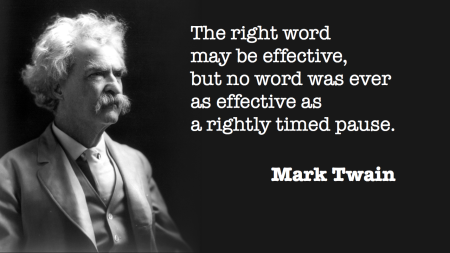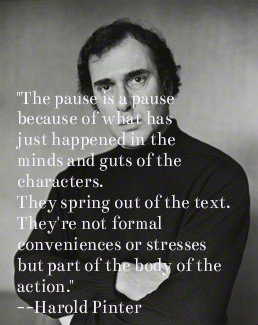Last week I talked about faster and slower scenes, but today I want to focus on the beat.
There are a lot of writing guides that define a ‘beat’ as simply one component of the story. A segment of dialogue can be a beat. A paragraph of exposition is another beat, and so on. A series of beats makes a scene. Some fiction writing gurus suggest using a ‘beat worksheet’ to craft a scene and, indeed, to write an entire novel. That’s a bit too ‘writing by numbers’ for me; I prefer a more instinctive approach so the novel can grow organically. But you can use worksheets and end up with a novel and it might be a very good novel indeed. It depends on what you’re going for, I suppose. In my opinion – and it’s only an opinion – such tools can make you a decent craftsman, but they’ll never make you an artist. That said, if you want to read more on the subject of this interpretation of beats, Jame Gold is an excellent source of information. here are some links:
http://jamigold.com/2013/07/do-beat-sheets-lead-to-formulaic-writing/
http://jamigold.com/for-writers/worksheets-for-writers/
And a sample worksheet from Jami Gold: http://jamigold.com/wp-content/uploads/2012/02/Master-Spreadsheet-preview.jpg
Moving on, though, to my definition of a beat:
A beat is a pause in the narrative. A rest stop in the middle of the conversation or the action.
Some plays, in particular radio plays, use ‘beat’ as a stage direction. This isn’t to indicate a change of scene, but to increase the dramatic tension, to suggest a change in mood, or to allow the audience to register a big reveal.
This works in literature too. Many writers associate it with dialogue, but you don’t need to confine it to that alone.
The Beat in Dialogue
“I’m having a problem,” she said.
“Problem?” he poured his coffee and sat down beside her. He was uncomfortably close but she’d be damned if she let on.
“Explaining beats in literature.”
“Ah.”
“You don’t know what I mean.” It sounded faintly accusing. She tried to mollify it. “It’s when—”
“It’s when there’s a pause in the middle of the scene or the dialogue.” He set the cup down and took her hand. “It’s when you want to emphasise something.”
“Yes,” she said. “Oh… Yes.”
In this example the pause should be fairly easily apparent. If it’s not, imagine the piece ending after the last ‘she said.’ In fact, you could keep that last ‘yes’ and not lose much in the tone. It’s that ‘Oh…’ that elevates this otherwise mundane piece. That ‘oh’ is slightly ambiguous. Is the character suddenly overcome with emotion? Or has the man done something surprising? Or is she trying to think of something else to say? From the tone, I’d speculate that it’s the first of these possibilities. But that pause would make me want to read on a bit further to find out.
Here’s an excerpt from a Ken Follett novel. I think it’s a little heavy handed, but it gets the job done:
‘Anyone who is guilty of such practices . . .,’ he paused for effect, leaning forward and staring at the congregation, ‘ . . . anyone in town . . .,’ he turned and looked behind him, at the monks and nuns in the choir, ‘ . . . or even in the priory . . .’ He turned back. ‘I say, anyone guilty of such practices should be shunned.’
He paused for effect.
‘And may God have mercy on their souls.’
— Ken Follett, World Without End (2007)
Now, while the ‘paused for effect’ phrase is a bit “Look at me!” it demonstrates the manipulative nature of the speaker and how he’s delivering a sermon with a specific agenda. If Follett was writing this piece of — I hesitate to call it dialogue; I think oratory comes closer — as an actual conversation, me might have changed that ‘paused for effect’ to an action: “He pounded his fist on the table…” or “He swept his hand wide, knocking over the crucifix…” Yes, my last example is just as heavy-handed, but sometimes the narrative requires something of the sort.
It’s also worth noting that Follett uses another pause in that excerpt, one that is a little less obvious. Did you spot it? Yes, it’s “He turned and looked behind him…” The action punctuates the oratory and makes us wait for the speech to continue.
What Actors can teach us about beats:
Actors understand beats. Even if it’s not in the script, an actor knows when the performance demands a pause. For instance, they’ll take a drink. Adjust their clothing. Move a prop. Now, OK, some of them do it because it means they get to hog the audience’s attention for a few seconds longer. But the good ones do it because they’re in tune with the rhythm of the scene and they know a pause is needed. A strong screenwriter will include the beats in the script.
Watch this scene from Schindler’s List. It’s only 3 minutes long but it still leaves you breathless. See if you can spot how the rhythm is manage by the script, the direction, the sound effects, and the actors:
How did you get on?
The scene is a series of pauses which leads to a staccato rhythm and that, in turn, adds to the tension. The tapping of the typewriter keys has a hugely symbolic significance (Stern – Ben Kingsley – is typing the list, and “the list is an absolute good. The list is life.”) There’s the cutting away from each character and back again, always with that tapping sound that emphasizes the lives at stake. The black and white cinematography underscores the absolute good and the absolute evil that Schindler and Stern are dealing with. But notice how many pauses Ben Kingsley adds: for instance, at 57 seconds he takes a moment to cough and move his hand to punctuate his line. At 1:43 he begins to ask a question, “What–” then he adjusts his glasses before completing the line. And there are more at the end of the scene when Stern has finished typing.
Using Pauses to Add to the Tension of a Scene:
As you’ve seen in the clip, you can also use the pause to add to the tension of a scene by stopping the action cold for just a second, and you can do this in places other than dialogue.
Here’s a section of narrative I borrowed from the fandom grammar live journal. It does a very nice job of demonstrating tension. See how many pauses you can spot:
Two days—two days—without the Doctor and Amy was doing fine—just fine. So, she’d been stranded on a planet and most of the slimy green people poked her when they saw her and called her The Flame-Headed Ghost, but she could handle all that. She was Amy Pond! She’d dealt with more and she’d given worse! Even so, the Doctor would be back soon . . . wouldn’t he?
So, how many pauses are there and how are they achieved? Well, firstly, there’s the repetition of ‘two days’ followed by the repetition of ‘fine’. It demonstrates the internal monologue of the character and her attempts to reassure herself. But the big pause comes at the end and is demonstrated by those ellipses.
The pause tells you where the emotion is and without emotion there is no tension. On the other hand, too many pauses can seem too intrusive and can stop the progression of the story. You can do it in spurts, of course. Half a page describing someone climbing a mountain can be full of pauses just as your character has to pause to take a breath. But more than half a page and the reader is apt to get frustrated and mutter, “Oh, just get on with it already!”
The pause exists to allow for an emotional response. Whether it’s an internal monologue, dialogue, or a scene, your instinct should tell you when there should be a beat. You need to develop an ear for the rhythm so you can tell where that pause should go.
Developing your ear:
One of the best ways I know is to read your work out loud. My routine is to work from the morning until mid-afternoon. Then I take a few hours off.
In the evening I read back over the piece I wrote earlier. I make notes about anything that might need further research, change any obvious glitches in spelling or grammar. Then I read the day’s writing aloud.
By hearing how a piece sounds you can catch when the rhythm is too monotonous. Changing the length of the sentences, the words you use, and spotting when you should pause becomes much more apparent when you read a piece out loud. It’s even better when you can get a friend to do the reading out loud for you, especially if they are a talented reader and can put emphasis into it. By seeing where they get stuck — too many similar word in a row, for instance — can alert you to problems. If they get out of breath trying to get to the end of a sentence or paragraph, you can be sure you need to give them a natural place to pause.
Other advantages of reading out loud:
- When you read something out loud you have to read at a slower pace than if you read silently. By slowing down you catch grammar or spelling mistakes that you might otherwise have missed.
- It helps you to spot when you’ve used the same word too many times in one paragraph, if you’ve used too much alliteration, or when the word choice is clumsy.
- It gives you a chance to implant the day’s work in your subconscious so you have a clear starting point for the next day.
And… we’ll stop there.




Interesting! Yes, a “beat” can refer to many things across the artistic disciplines. Now that you mention it, I have heard directors and actors refer to a pause as a beat (as in “Wait a beat between saying those two lines.”).
As you noted, that can be a powerful technique for making emotions or reactions sink deeper or seem more important and being conscious of rhythm can help us write those naturally. In my head, I just call those “pauses” though, or else there’d be too much opportunity for confusion with the beats of beat sheets. 😀 Thanks for the shout out!
LikeLike
Thanks for commenting, Jami.
I’ve written radio plays and the word ‘beat’ there indicates a pause. That may be why I have a different interpretation of the term. Mind you, I’ve also heard the term ‘breather’– though I would have thought that referred to a rude anonymous person on the other end of the phone…
LikeLike